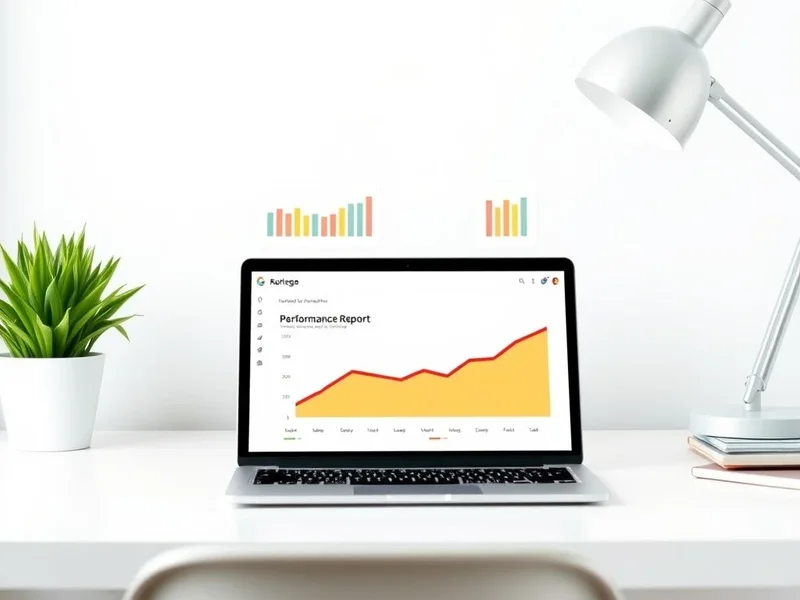How to Master the Quarterly Performance Report: A Guide for Professionals
Has your manager ever asked for an update on your team's progress? A Quarterly Performance Report is the perfect tool for this. It is a key part of professional workplace communication and a common task in many jobs. This guide will help you understand how to write a clear and effective report. Learning this professional writing skill shows your value and improves your business English.

Table of Contents
- What Is a Quarterly Performance Report?
- Key Components of a Quarterly Performance Report
- Sample Language & Sentence Starters
- Key Vocabulary for Your Quarterly Performance Report
- Conclusion
What Is a Quarterly Performance Report?
A Quarterly Performance Report is a formal document. It summarizes the achievements, progress, and challenges of a team, project, or company over a three-month period. Think of it as a regular check-in to see if you are meeting your goals. It helps you track your work in a structured way.
This type of report is used in many industries, including marketing, sales, finance, and project management. Its main purpose is to provide clear information to stakeholders like managers, clients, or investors. This business reporting helps everyone make smart decisions for the next quarter.
More: How to Write a Winning Market Expansion Report: Your Guide
Key Components of a Quarterly Performance Report
A good report has a clear and logical structure. A consistent format makes it easy for readers to find the information they need. This is a vital part of creating a professional document. Here is a typical report structure:
- Executive Summary: A brief, one-paragraph overview of the most important findings and results. Write this section last.
- Introduction: Clearly state the purpose of the report, the team or project it covers, and the time period (e.g., Q2 2024: April 1–June 30).
- Key Performance Indicators (KPIs) Analysis: Present the data. Use charts or tables to show performance against your goals. Explain what the numbers mean.
- Achievements and Highlights: What went well? Describe your key successes and accomplishments during the quarter.
- Challenges and Setbacks: What obstacles did you face? Be honest about any problems and explain how you are addressing them.
- Recommendations and Next Steps: Based on your analysis, what should happen next? Suggest specific actions for the upcoming quarter.
Maintaining a professional tone is crucial. For more guidance on business writing, the Purdue Online Writing Lab (OWL) offers excellent resources.
More: How to Write a Powerful Business Development Report Guide
Sample Language & Sentence Starters
Using the right language is key to formal English writing. These English report examples and sentence starters will help you sound more professional.
For the Introduction:
- "This report outlines the performance of [Team/Project Name] for Q2 2024."
- "The purpose of this document is to review progress against the goals set for the quarter."
- "This quarterly report covers the period from [Start Date] to [End Date]."
For Analyzing Data:
- "The data indicates a significant increase in user engagement."
- "Compared to the previous quarter, we observed a 10% decrease in expenses."
- "Sales figures met the targets we forecasted for this period."
For Recommendations:
- "Based on these findings, we recommend allocating more resources to marketing."
- "The primary focus for the next quarter will be on product development."
- "To address this challenge, our proposed action is to..."
More: How to Write an Effective Equity Report A Professional's Guide
Key Vocabulary for Your Quarterly Performance Report
Improving your writing skills includes expanding your vocabulary. Here are some essential terms for your Quarterly Performance Report.
| Term | Definition | Example Sentence |
|---|---|---|
| Benchmark | A standard to measure performance against. | Our team's performance exceeded the industry benchmark this quarter. |
| Metric | A system or standard of measurement for tracking progress. | One key metric for success is our customer satisfaction score. |
| Objective | A specific, measurable goal to be achieved. | Our main objective for the quarter was to increase sales by 10%. |
| Outcome | The final result of a process or action. | The positive outcome of the campaign was higher brand awareness. |
| Variance | The difference between a planned and an actual result. | The variance in the budget was due to unexpected supply costs. |
| Forecast | A prediction of future results based on data. | The financial forecast for the next quarter looks very promising. |
| Stakeholder | A person with an interest in a project or business. | We will present the report to all key stakeholders next week. |
| Deliverable | A specific product or result that must be completed. | The final deliverable for the project is a market analysis report. |
| Milestone | An important point in the progress of a project. | Reaching 10,000 active users was a major milestone for our team. |
| Trend | A general direction in which something is changing. | We observed a downward trend in customer complaints this quarter. |
Conclusion
Learning how to write a report is an essential skill in today's workplace. A well-written Quarterly Performance Report clearly communicates your successes, challenges, and plans. It shows your ability to analyze information and contribute to your company’s goals.
For writing practice, try this: choose a personal goal (like fitness or learning a new skill). Write a short, one-page report on your progress over the last three months. This exercise will help you master the report structure.
Use these tips to write your next report with confidence!